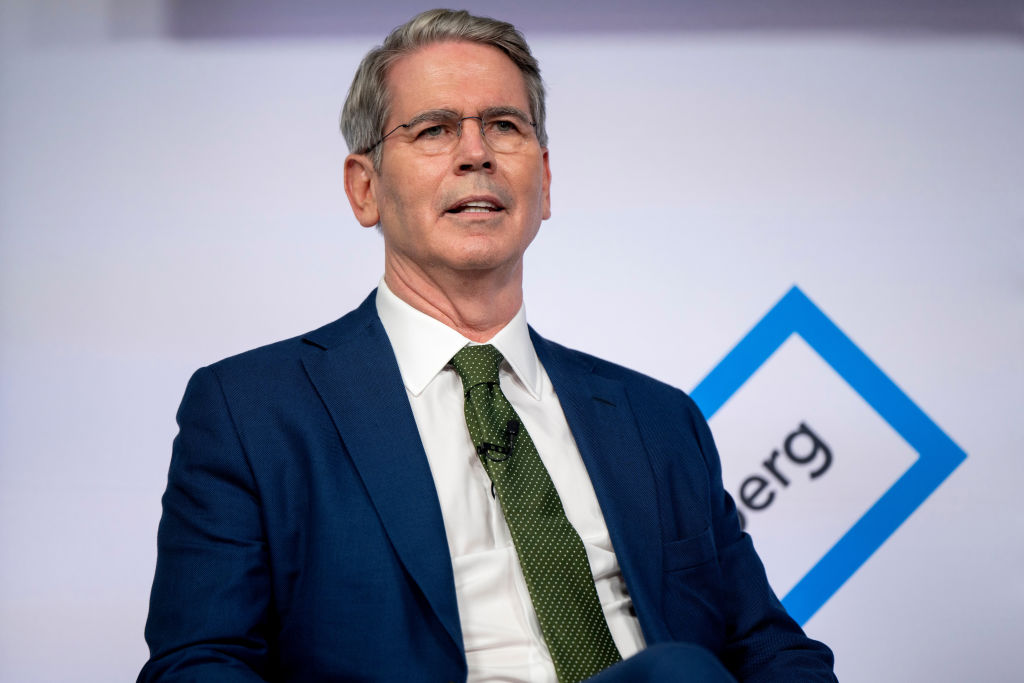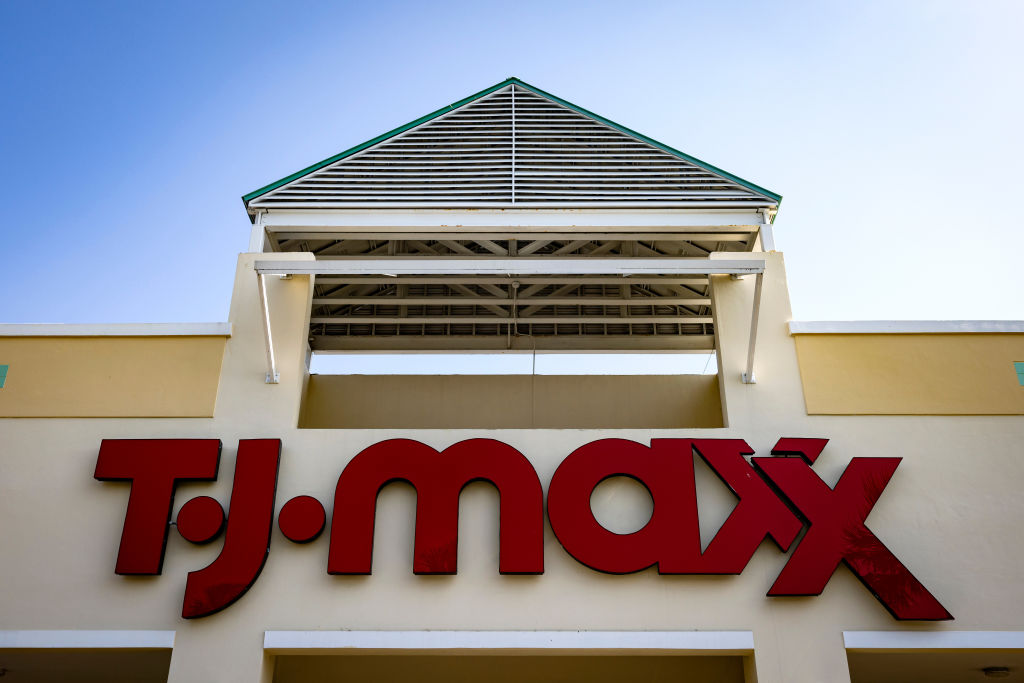Our Man Goes Undercover and Tells All
He spent days sitting through free seminars to become a super trader. Lesson number one: It’ll cost you.
Admit it: You’ve been tempted. You’ve seen the infomercials for trading systems that will teach you how to master the markets. Sign up for a free seminar in your area and you’re on your way to wealth and freedom. Ordinary people just like you are earning thousands each month. Why not join the club?
With visions of early retirement dancing in my head, I decided to take the plunge, or at least the initial part of it. I would attend the free seminars of three big trading-education outfits: Online Trading Academy, BetterTrades and Profit Strategies. I wanted to see whether these outfits delivered on their promises to help people become successful traders. Here’s what I found.
“Respect your capital”
The first rule you learn at the Online Trading Academy (OTA) is not to trust Wall Street with your money. “Wall Street has trained us to be buy-and-hold investors,” the instructor, Chris, told me and the two other students attending the Power Trading Workshop at the company’s offices in Vienna, Va., a suburb of Washington, D.C. (OTA also has offices in the United Kingdom, Singapore and Dubai, as well as in 29 other cities in the U.S. and Canada.) This is a bad thing, Chris said, because the market goes up, down and sideways. And when it heads south, as it did during the 2007-09 bear market, buy-and-hold investors get crushed. OTA’s mission was to teach the likes of me how to make money regardless of what the market does.

Sign up for Kiplinger’s Free E-Newsletters
Profit and prosper with the best of expert advice on investing, taxes, retirement, personal finance and more - straight to your e-mail.
Profit and prosper with the best of expert advice - straight to your e-mail.
How, you ask? Through the power of technical analysis. Technical analysts study past data -- primarily a security’s price and trading volume -- to predict the future. They look for patterns to find reliable signals of when to buy or sell financial instruments, such as stocks, options, futures and foreign currencies. The process involves studying a menagerie of indicators, such as candlestick charts, Bollinger bands and something called the stochastic oscillator. Technicians care little, if at all, about fundamental analysis -- the examination of, say, a company’s earnings and balance sheet or of general economic conditions.
Technical analysis has both passionate critics and ardent adherents. For example, an October 2009 study by New Zealand’s Massey University found that of more than 5,000 strategies that employ technical analysis, none produced returns in the 49 countries where researchers tested the strategies beyond what you’d expect by chance. However, scores of traders, including billionaire Paul Tudor Jones, say the discipline helped them amass great fortunes. So I tried to keep an open mind.
But a debate about technical analysis was not part of the program at OTA. Instead, the seminar quickly evolved from a round of Wall Street bashing to a pitch to enroll in the company’s $4,990 Pro-Trader class. The seven-day course would show “how to treat your capital with respect,” Chris said. He added that some of the academy’s students had doubled their money in three months after taking the Pro-Trader class. Once I paid tuition, I could retake the course as often as I wanted. And if I used one of the six discount brokers that partnered with OTA, I would earn rebates on commissions up to the cost of the classes I took.
Overall, I left my free OTA seminar less than satisfied. I wanted to learn how to trade and all I got was a sales pitch. It was time to hit the road.
“Who likes money?”
I drove to the Hilton Airport Hotel in Norfolk, Va., to attend the Financial Freedom Expo, sponsored by BetterTrades. About 30 would-be zillionaires, mostly baby-boomers, sat in a cavernous ballroom. Men outnumbered women two to one.
BetterTrades’ presentation was the most lavish of the three seminars I attended. At the front of the room a large projection screen was draped in velvety purple curtains. Tables displaying neat rows of BetterTrades DVD box sets surrounded the screen. I felt like a contestant on The Price Is Right, especially after I met the expo leader, Steve, who was tall, tan and likable -- just like the game show’s Bob Barker. Steve fired up the crowd with questions such as “Who likes money?” and “Who would like to make more?”
For Steve, successful trading was a matter of identifying support and resistance levels for a security. Look at a stock chart. If you draw a line that hits multiple points where the stock price bounces back from a low point, it is known as a support level. The line drawn on the chart that hits multiple points where the price peaks is known as a resistance level. Under technical analysis, a stock trader wants to buy at support (low) and sell at resistance (high). Sounds easy, but it’s difficult to know where the support and resistance levels are until after the fact.
With the class wrapping up, Steve had a special offer for me. For just $3,995, if I acted now, I could attend the two-day Market Essentials seminar coming to Norfolk. The first five people to sign up would get free bonus training materials. Steve said I had nothing to lose because if BetterTrades’ strategies did not earn me three times what I spent on tuition within six months, the company would refund my tuition or train me free of charge for up to a year until I mastered the program. (His offer did not take into account how much capital I would put up.)
Despite the guarantee, I wanted to know more about what I was going to learn in the class and what kind of return I could realistically expect to earn. Profit Strategies gave me a glimpse of what to expect.
“Work your tail off”
Profit Strategies (PS) takes the total-immersion approach to education, kind of like throwing you into the pool to force you to learn how to swim. That’s how I felt during PS’s free Active Investor Methods class at the Hilton Miami Airport. The two-day course, which had about 40 students, mixed beginners with trading veterans. We skipped the introductory material and jumped right into trading strategies.
The instructors, Mike and Jay, detailed several complicated systems. One moment we were discussing how to use a spike in a stock’s one-day trading volume to predict whether the price would rise. The next moment we were reviewing how to construct an “iron condor,” a strategy of buying and holding four different options with different strike prices. Between the presentations, Mike and Jay flogged PS’s eight-week courses on various trading systems, each of which cost $3,495. Students in the course would meet with the instructor online once a week for class and to review trades. “Only a limited number of seats left,” Jay said.
The audience had the opportunity to pepper Mike and Jay with questions. A newcomer asked them what kind of return one should expect to earn from trading. Mike said that a 5% monthly return sounded reasonable. That works out to 80% annualized.
All the seminars I attended were quick to point out that individual results will vary. And there’s the rub. Because the performance of individual traders is not public, you have no way of knowing how well these trading programs work. Sure, the seminars present testimonials from their top earners, but you don’t know how well the average student does. Studies show how tough it is to succeed at trading. In 1999, for example, at the height of the day-trading craze, the North American Securities Administrators Association studied the accounts of day traders. Only 11% consistently generated profits, and 70% sustained losses that wiped out their accounts. None of the seminar com-panies monitors the success rate of all their graduates. Says Judy Hackett, BetterTrades’ marketing chief: “We can only track the satisfaction of our customers, and we have lots of very happy customers.”
Students who have succeeded with these systems swear by them. Jeffery Kronenberg, a 30-year-old from New York City, says he is able to support himself using the skills he learned at OTA. He has been a full-time trader since October 2009 after taking a class last May. “You have to work your tail off,” says Kronenberg, who typically gets up at 6:30 a.m. on trading days and works until the markets close at 4 p.m. “They will teach you, but you’ve got to really want it,” says Abba Genes, 26, of Mount Vernon, N.Y. He adds that the skills he acquired from BetterTrades allow him to earn about $1,000 a month to supplement his income as a concierge. Genes, who trades three hours a day in the morning, plans to become a full-time trader after he completes college. He says it took months before he learned how to generate trading profits. Meanwhile, big early losses nearly wiped out his account.
The seminar instructors I met said they made a good living from trading. But it’s impossible to know whether they are successful traders or just great salesmen. The trading-education industry does not have a good track record when it comes to sales practices. Seminar promoter Teach Me to Trade shut down in the U.S. after the Securities and Exchange Commission filed a 2008 complaint against two of its salespeople. The SEC alleged that in Teach Me to Trade seminars the pair claimed to be successful traders, but they actually earned their millions from commissions selling seminars rather than from trading. In December 2009, Investools paid $3 million to settle an SEC complaint that two of its salesmen misrepresented themselves at seminars as expert traders.
As I completed my journey, I couldn’t help but wonder why those who possess the magic formulas for successful trading would give away their secrets -- even if they did earn $4,000 or so per customer. After all, if you can earn 80% a year, why would you run the risk of seeing the effectiveness of your strategy diminish as more and more people started using it (a common occurrence in investing)? That aside, what’s clear is that if you decide to learn how to trade from any of these companies, you will need to have faith that your instructors know what they are doing and that you can convert their knowledge into winning moves. The odds will be against you.
Why it’s hard to trade and win
High costs. Most trading programs charge more than $4,000 for their workshops and tutoring packages. In addition, trading generates a lot of commissions, usually $5 to $9 per stock trade at the typical discount broker.
Too much time. It can take years of practice to earn trading profits consistently. Even if you are not trading on a daily basis, you will have to dedicate several hours a week to studying charts and related data.
Potential losses. Trading can lead to huge investment losses. This isn’t for widows, orphans and those with weak stomachs.
Tough competition. Financial firms have better trading tools than you do. High-frequency trading systems utilized by professionals make it harder for individual traders to succeed.
Get Kiplinger Today newsletter — free
Profit and prosper with the best of Kiplinger's advice on investing, taxes, retirement, personal finance and much more. Delivered daily. Enter your email in the box and click Sign Me Up.
-
 5 Historic Philadelphia Homes for Sale Now
5 Historic Philadelphia Homes for Sale NowPhiladelphia is a goldmine of historic properties that rival the best in New York, London and Paris for charm and opulence. Here are five gems you can own.
By Charlotte Gorbold
-
 When to Sell Your Stock
When to Sell Your StockKnowing when to sell a stock is a major decision investors must make. While there's no one correct answer, we look at some best practices here.
By Charles Lewis Sizemore, CFA
-
 Why Wells Fargo's Revenue Miss Isn't Worrying Wall Street
Why Wells Fargo's Revenue Miss Isn't Worrying Wall StreetWells Fargo is one of the best S&P 500 stocks Wednesday even after the big bank's top-line miss. Here's what you need to know.
By Joey Solitro
-
 Constellation Energy Stock Soars on Its $26 Billion Buy. Here's Why Wall Street Likes the Deal
Constellation Energy Stock Soars on Its $26 Billion Buy. Here's Why Wall Street Likes the DealConstellation Energy is one of the best S&P 500 stocks Friday after the utility said it will buy Calpine in a cash-and-stock deal valued at $26 billion.
By Joey Solitro
-
 What Scott Bessent's Treasury Secretary Nomination Means for Investors
What Scott Bessent's Treasury Secretary Nomination Means for InvestorsMarkets are reacting positively to Trump's nomination of Scott Bessent for Treasury secretary. Here's why.
By Joey Solitro
-
 TJX Stock: Wall Street Stays Bullish After Earnings
TJX Stock: Wall Street Stays Bullish After EarningsTJX stock is trading lower Wednesday despite the TJ Maxx owner's beat-and-raise quarter, but analysts aren't worried. Here's why.
By Joey Solitro
-
 Cisco Stock: Why Wall Street Is Bullish After Earnings
Cisco Stock: Why Wall Street Is Bullish After EarningsCisco stock is lower Thursday despite the tech giant's beat-and-raise quarter, but analysts aren't concerned. Here's what you need to know.
By Joey Solitro
-
 Apple Stock Slips After Earnings. Wall Street Isn't Worried
Apple Stock Slips After Earnings. Wall Street Isn't WorriedApple stock is trading lower Friday despite the iPhone maker beating expectations for its fiscal fourth quarter, but analysts are still bullish.
By Joey Solitro
-
 Tesla's Robotaxi Event: What Wall Street Expects
Tesla's Robotaxi Event: What Wall Street ExpectsTesla’s robotaxi event kicks off next week. Here’s what Wall Street expects to see and how analysts feel about the stock heading into the event.
By Joey Solitro
-
 Dell Stock: Wall Street Sees More Upside After Earnings
Dell Stock: Wall Street Sees More Upside After EarningsDell stock is higher Friday after the PC maker beat Q2 expectations, but analysts think there's more room to run. Here's what you need to know.
By Joey Solitro